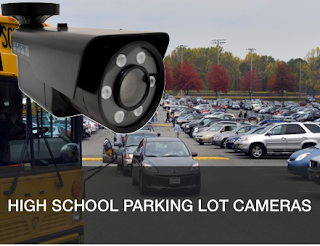The policies regarding school cameras vary depending on the specific school or educational institution. While some schools may have cameras that record continuously, others may have cameras that only record during certain hours or in specific areas. Additionally, some schools may have cameras that are only activated when triggered by motion or other events.
The use of surveillance cameras in schools is typically aimed at maintaining security and ensuring the safety of students and staff. The specific guidelines and practices regarding camera usage are typically determined by the school administration in compliance with local laws and regulations. If you have concerns about camera usage at a particular school, it is best to reach out to the school administration directly for more information on their policies.
Do school cameras work at night?
School cameras can work at night, depending on the type of cameras installed. Many modern surveillance cameras are equipped with infrared technology, allowing them to capture footage even in low-light or no-light conditions. These cameras use infrared LEDs (light-emitting diodes) to illuminate the area with infrared light, which is invisible to the human eye but can be detected by the camera's sensors. This enables the cameras to record clear footage even in darkness.
However, it's important to note that not all school cameras may be equipped with night vision capabilities. The specific features and capabilities of the cameras installed in a school would depend on the school's budget, security requirements, and other factors. It's best to contact the school administration or the responsible authority to inquire about the specifics of the cameras installed in a particular school.
Should cameras be allowed in the classroom?
The decision of whether cameras should be allowed in the classroom is subjective and depends on various factors, including educational goals, privacy concerns, and the specific context in which cameras are being considered. Dangerous Schools.com is a service dedicated to identifying schools near dangerous locations that have a track record of violence.
Advantages of cameras in the classroom:
Security and safety: Cameras can help monitor and deter incidents of violence, bullying, or unauthorized access to school premises, thus promoting a safer environment.
Behavior management: The presence of cameras can encourage students and teachers to follow established rules and guidelines, reducing disruptive behavior and promoting a more productive learning environment.
Teacher development and feedback: Cameras can be used for professional development purposes, allowing teachers to review their own instructional techniques, receive feedback, and make improvements.
Disadvantages and concerns:
Privacy: Cameras in classrooms may raise privacy concerns for both students and teachers, as they capture sensitive and personal information that could be misused if not properly handled and protected.
Trust and psychological impact: The presence of cameras may affect the trust and relationships between students and teachers, potentially hindering open communication and creating a surveillance-like atmosphere.
Pedagogical limitations: Continuous camera monitoring may limit the flexibility and spontaneity of teaching methods, inhibiting creative or experimental approaches that require a more relaxed classroom environment.
Ultimately, the decision to allow cameras in the classroom should involve careful consideration of these factors, as well as engaging in open dialogue and consultation with students, teachers, parents, and relevant stakeholders. It is important to strike a balance between promoting safety and security and respecting privacy and trust within the educational environment.
We would appreciate your comments below on what your school policy is doing.
Related articles:

